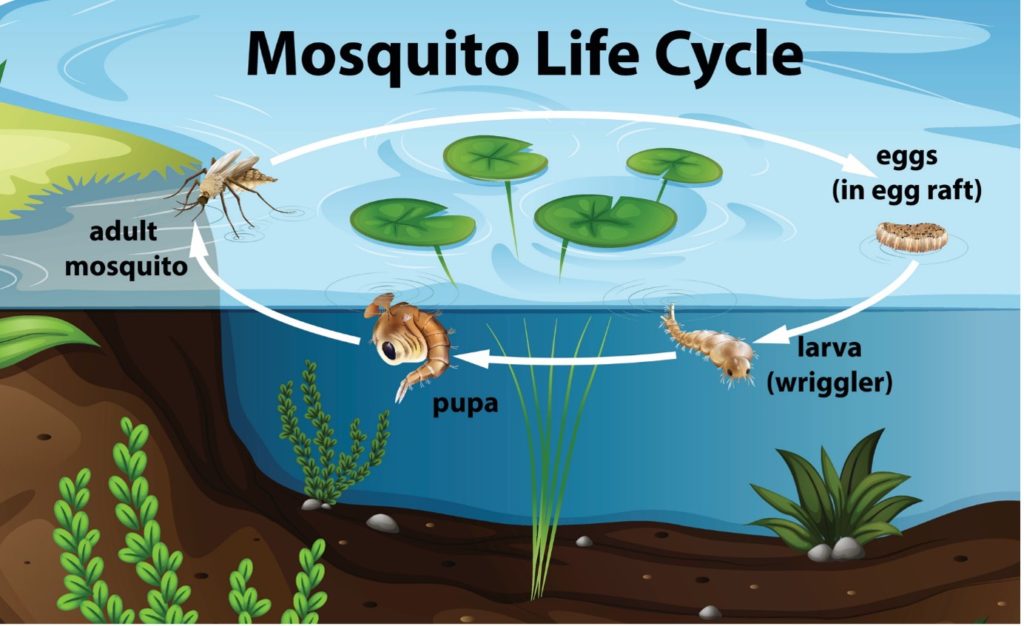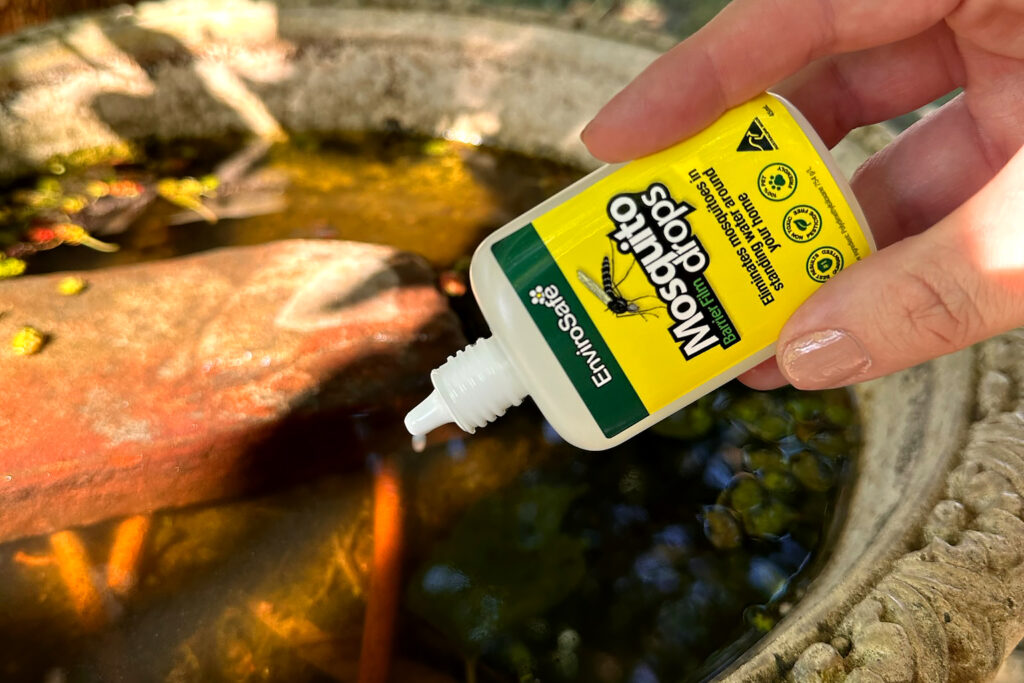EnviroSafe Mosquito Drops is a silicone-based liquid which self-spreads across the surface of standing water to form a very thin film, preventing mosquito larvae from completing their development and thereby disrupting the mosquito breeding cycle.
About the mosquito lifecycle
To understand how Mosquito Drops work, it’s handy to know a bit about the mosquito lifecycle. For most mosquito species, that starts with egg rafts that are laid on the surface of water pools by female mosquitoes after they have bitten someone and taken in a blood meal. Once hatched from the eggs, the larvae, or “wrigglers”, move around in the pools, feeding on algae or micro-organisms in the water. Periodically, they need to breathe at the surface of the water, and they do this by piercing the surface with their siphon at the rear end of their body, and opening a valve to allow air to enter. The next stage of the lifecycle is the non-feeding pupal stage and this stage too needs to come to the water surface to breathe. Instead of using a single siphon like the larvae, they have two breathing tubes known as trumpets at the front end. Finally, the adult mosquito emerges from the pupa and the females seek a blood meal and a mate to complete the cycle and start it all over again.
How do Mosquito Drops work?
EnviroSafe Mosquito Drops are not a chemical insecticide. They have a physical action against the larval and pupal stages of the mosquito lifecycle by
preventing those stages from successfully piercing the water’s surface to breathe. Normally, the natural surface tension at the air/water interface is quite strong, because the molecules at the surface of the water cohere more strongly to the water molecules below than to the air. This is why it is possible for a needle or paper clip to balance on a cup of water.
Mosquito Drops spread across the water’s surface, forming a layer only one molecule thick, but this is enough to change the surface tension of the water. Mosquito larvae, which have breathing structures adapted to the naturally strong water surface tension, can no longer successfully attach to the surface to breathe. The larvae can survive for days without breathing at the water’s surface, depending on the species and the stage of development that they are at, as there can be some gas exchange through the body covering. However, respiration this way is insufficient to allow them to continue their development and emerge as adults.
In scientific research studies, Mosquito Drops have been shown to be effective for a number of well-known mosquito species including the yellow fever mosquito Aedes aegypti, found in Queensland, as well as both the backyard, daytime biting mosquito, Aedes notoscriptus and southern house mosquito Culex quinquefasciatus which are found throughout Australia.
The silicones used in Mosquito Drops are inert, non-toxic and non-flammable. As the molecules are too large to pass through cell membranes, they do not build up in the bodies of living organisms making them very safe to use.
They are widely used in other consumer and industrial applications including in building materials, lubricants, shampoo, sealants, medical devices, contact lenses and even in food applications. Formulated into Mosquito Drops, they become a powerful tool in a tiny bottle which can play a critical role in breaking the reproductive cycle of mosquitoes.





